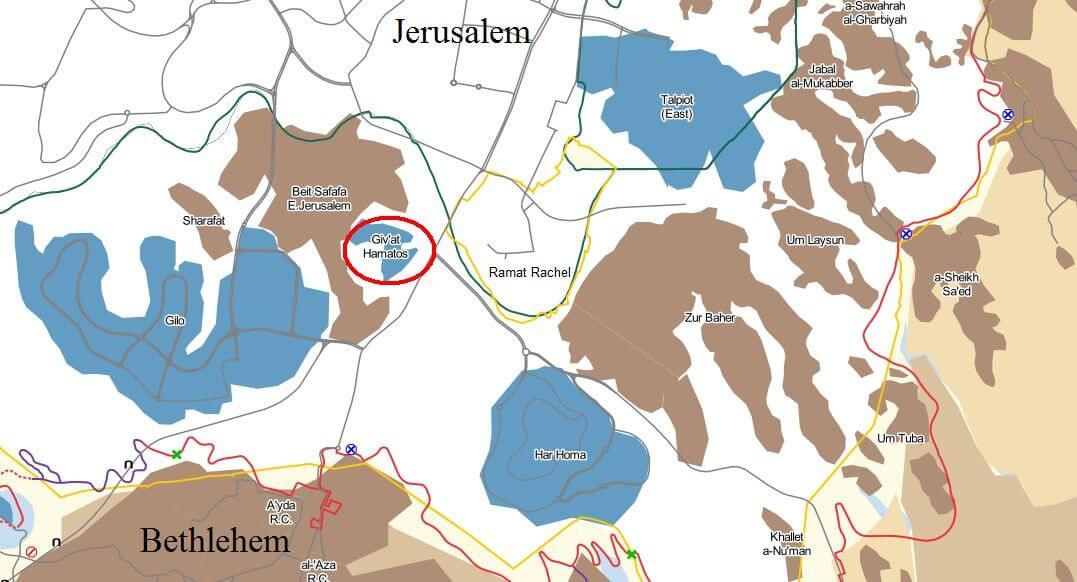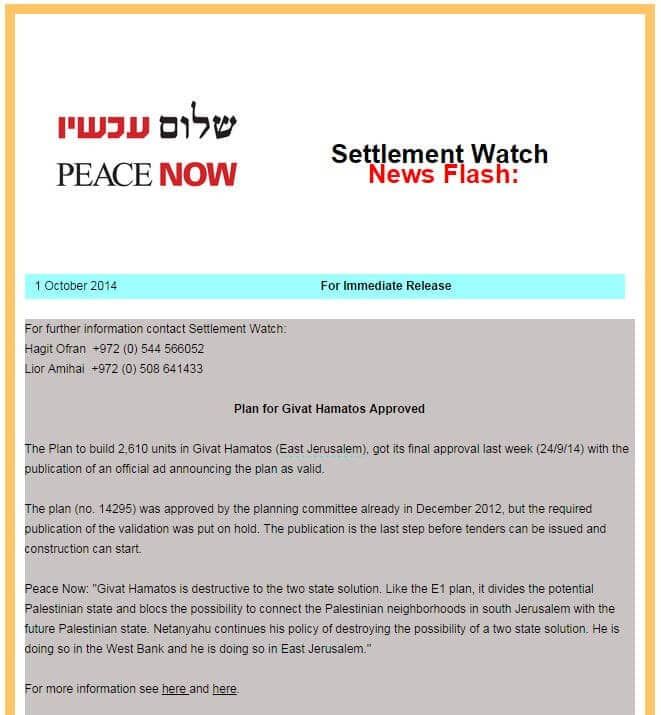It’s like Groundhog Day all over again. Israeli PM Netanyahu meets with U.S. President Obama and the media is full of stories of Israeli settlement construction and condemnations from both the White House and U.S. State Department.
So how did we get to this “perfect storm?”
Firstly, of course, none of this would be possible without a media obsessed with the issue of settlements above all else. Despite everything going on in the region, too many still buy into the narrative that claims that building Jewish homes, in this case, within a Jerusalem neighborhood, represents the biggest obstacle to peace in the Middle East.
Secondly, factor in the symbiotic relationship between the media and non-governmental organizations (NGOs), in particular those that are critical of Israeli policies. The Washington Post gets it right when it talks about building plans for Givat Hamatos in Jerusalem:
The housing development has been in planning for years but was on hold until last week, when the government ran a public notice that allows it to accept tenders and begin construction. The notice drew no attention, however, until the Israeli advocacy group Peace Now released a statement about it shortly before Obama and Netanyahu met.
Indeed, it was only when this appeared in the inboxes of the foreign journalists that this became a story at all:
So Peace Now deliberately held off on releasing this press statement for a week when it knew it could achieve maximum traction in the press while at the same time causing a new headache for Netanyahu during his U.S. trip. And this despite the fact that the building in Givat Hamatos had been approved as far back as December 2012.
But for The Times of London, for example, it’s all about a brand new settlement rather than building within an existing area of Jerusalem:
Divisions between Israel and the United States were exposed as a controversial new Jewish settlement was approved hours before a meeting between the countries’ leaders.
It’s not a “new Jewish settlement” and it certainly wasn’t approved only hours before the Netanyahu-Obama meeting.

Also omitted from press coverage, aside from the Israeli media, is the fact that half of the Givat Hamatos housing is designated for Arab residents. Indeed, what is widely misunderstood in the arguments surrounding housing in Jerusalem is that there is nothing legally to prevent Arab residents of Jerusalem or Israeli Arabs from buying, renting and residing in properties anywhere within the municipal boundaries of the city.
So we can ascertain that in both the timing and the substance of the story of Givat Hamatos, it is nothing more than an artificially created “crisis” that in reality, should have passed unnoticed had it not been for the intervention of Peace Now.
Image: CC BY-SA HonestReporting, flickr/Philip Taylor



